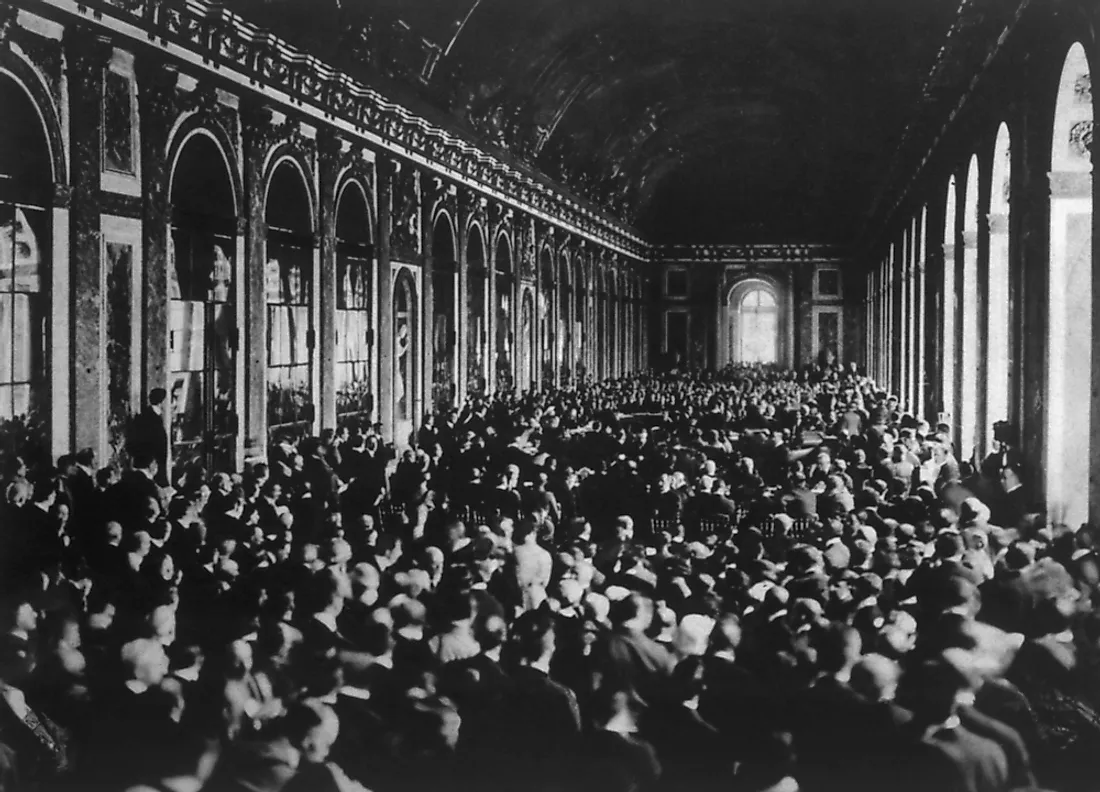What Was the Treaty of Versailles?

The Treaty of Versailles brought World War I to an end and is therefore considered to be the most important of all treaties. The treaty was signed in Versailles, France on June 28, 1919, finally ending the war between the Germans and the Allied Powers. It should also be noted that the German allies signed distinct treaties. Of great importance is the fact that even though the armistice that was authorized on November 11, 1918, ended the war, the discussions at the Paris Peace Conference took close to six months to come to an end.
World War I
The First World War was fought between the Allies, composed of the United Kingdom, French Republic, and Russian Empire, and the Central Powers, composed of Germany and Austria-Hungary. These were later joined by Italy, Japan, the United States, Bulgaria, and the Ottoman Empire. Although WWI was fought in Europe, Africa, Asia, and the Middle East, the conflict caused international turmoil.
It was triggered by the assassination of Archduke Franz Ferdinand of Austria on June 28, 1914, after which Austria-Hungary declared war on Serbia on July 28, 1914, beginning the war. The war was ended after 4 years when Austria-Hungary and then Germany agreed to an armistice. Although the armistice signaled the end of the war on November 11th, 1918, the negotiations for the peace treaty lasted a further six months.
Negotiations
The Allies decreed that the war would continue if Germany did not sign the peace treaty they had all drafted. The German government headed by Philipp Scheidemann refused to sign the treaty claiming that it was against a shared ground. Scheidemann chose to resign from duty rather than sign the treaty. The newly appointed head of state made it known to other nations that he would be willing to sign the treaty if certain articles were amended. The Allies, however, would not budge, and the Treaty of Versailles was signed on June 28, 1919, after six months of negotiations.
Those negotiating the treaty were 70 representatives from 27 countries excluding the countries that were defeated during the war such as Germany, and the new nations of Hungary and Austria. In addition to these nations, Russia was also exempted since it had a previous treaty with the Germans in place. The Treaty of Brest-Litovsk, signed between Germany and Russia on March 3, 1918, saw to it that the Germans were given a huge portion of the Russian’s land and its reserves.
In the beginning of the negotiations, only ten delegates from Britain, Japan, United States, France, and Italy handled the talks within themselves. However the final negotiations were concluded over 145 sessions by the top representatives of Britain, United States, France, and Italy. Other nations held various commissions to make recommendations for the treaty.
The Treaty
The agreement contained a set of provisions which required Germany to own up for the losses experienced during the war and to accept the liability brought by it. The other nations of the Central Powers signed similar articles. This particular article was later on termed as the 'War Guilt' clause' It imposed military restrictions forcing Germany to severely downsize their army, territorial concessions such as recognizing the independence of several nations, and compensation for the losses experienced by the Entente powers. As of the data collected in 1921, this figure came down to about $31.2 billion or £6.7 billion. The reparations were highly debated, some believing that the monetary aspects of the treaty were too harsh, while other claimed that the treaty was too lenient on the Germans who had initiated the war.
The League of Nations secretariat registered the treaty on October 21st, 1919.











